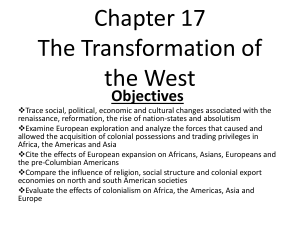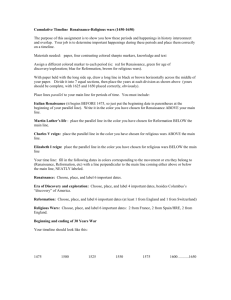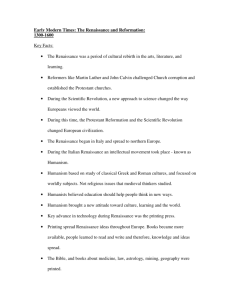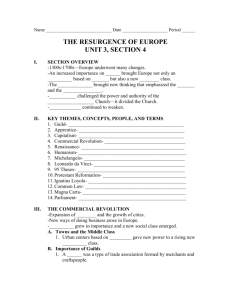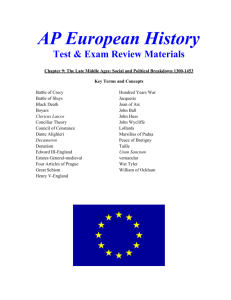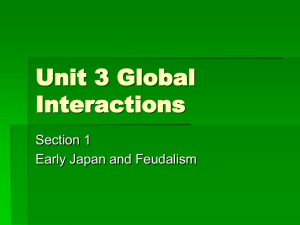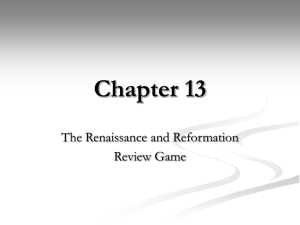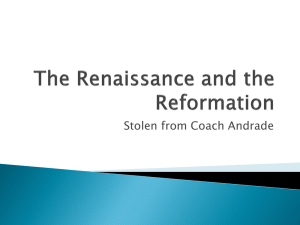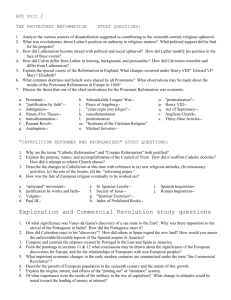Chapter 15 Europe in the Renaissance and
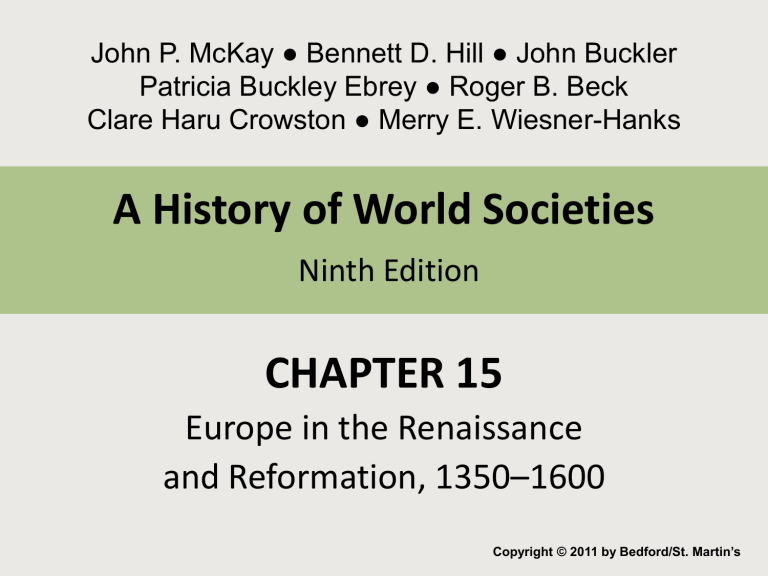
John P. McKay ● Bennett D. Hill ● John Buckler
Patricia Buckley Ebrey ● Roger B. Beck
Clare Haru Crowston ● Merry E. Wiesner-Hanks
A History of World Societies
Ninth Edition
CHAPTER 15
Europe in the Renaissance and Reformation, 1350–1600
Copyright © 2011 by Bedford/St. Martin’s
I. Renaissance Culture
A. Wealth and Power in Renaissance Italy
1. The Medici family
2. Cities of Italy
I. Renaissance Culture
B. The Rise of Humanism
1. Individual achievement
2. Educational practice
3. Machiavelli’s The Prince
I. Renaissance Culture
C. Christian Humanism
1. Christian cultural mix
2. Thomas More’s Utopia
3. Desiderius Erasmus
D. Printing and Its Social Impact
1. Johann Gutenberg
2. The written thought
I. Renaissance Culture
E. Art and the Artist
1. Religious themes
2. Donatello
3. Leonardo da Vinci
4. Michelangelo
II. Social Hierarchies
A. Race and Slavery
1. African influences
2. Atlantic islands
B. Wealth and the Nobility
1. Changing status
2. Hierarchy of orders
II. Social Hierarchies
C. Gender Roles
1. Female rulers
2. The “true” man
III. Politics and the State in the Renaissance, ca. 1450–1521
A. France
1. Charles VII
2. French royalty
B. England
1. The Welsh house of Tudor
2. Henry VII
III. Politics and the State in the Renaissance, ca. 1450–1521
C. Spain
1. Ferdinand and Isabella
2. Persecutions
3. Inquisitions
D. The Habsburgs
1. Marital politics
2. Maximilian
IV. The Protestant Reformation
A. Criticism of the Church
1. Clerical concerns
2. Absenteeism
B. Martin Luther
1. Justification through faith
2. Indulgences
3. Ninety-five Theses
4. Diet of Worms
IV. The Protestant Reformation
C. Protestant Thought and Its Appeal
1. Protestants
2. Foundational arguments
3. Lutherans
4. The written word
D. The Radical Reformation and the German Peasants’ War
1. Anabaptists
2. Peasant tax revolt
3. Nobles’ response
IV. The Protestant Reformation
E. Marriage and Women’s Roles
1. Celibacy
2. The pastor’s wife
3. Sacrament or contract
F. The Reformation and German Politics
1. State support
2. Religious wars
3. Peace of Augsburg
IV. The Protestant Reformation
G. England’s Shift Toward Protestantism
1. King Henry VIII
2. Mary and Elizabeth
3. The Puritans
H. Calvinism and Its Moral Standards
1. John Calvin’s predestination
2. Calvinist descendants
V. The Catholic Reformation
A. Papal Reforms and the Council of Trent
1. General council
2. Spiritual renewal
V. The Catholic Reformation
B. New Religious Orders
1. The Ursulines
2. The Society of Jesus
VI. Religious Violence
A. French Religious Wars
1. Religious “pollution”
2. Saint Bartholomew’s Day
3. Edict of Nantes
B. Civil Wars in the Netherlands
1. Spanish control
2. Union of Utrecht
VI. Religious Violence
C. The Great European Witch-Hunt
1. Demonological beliefs
2. Trials and executions
3. Doubts


